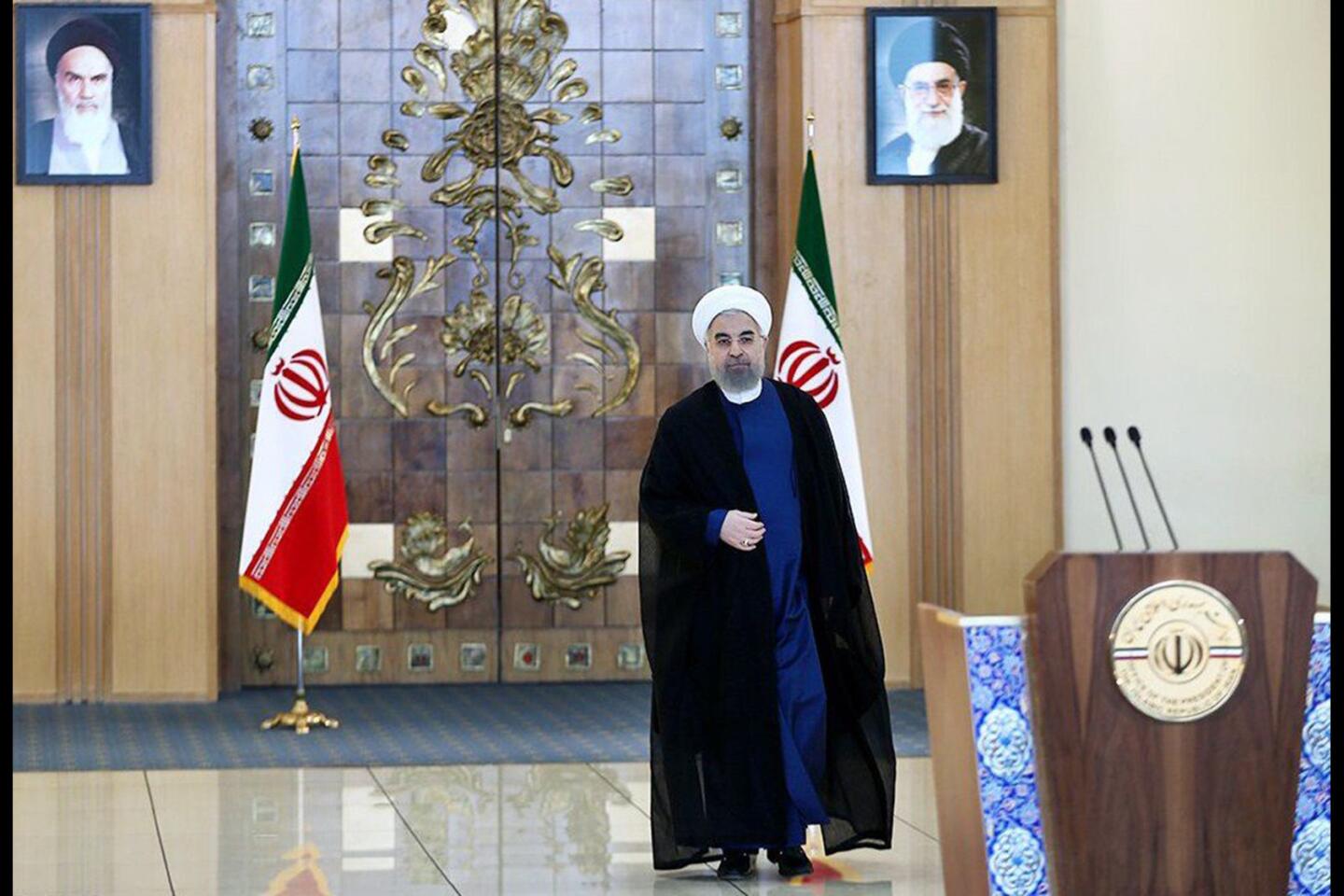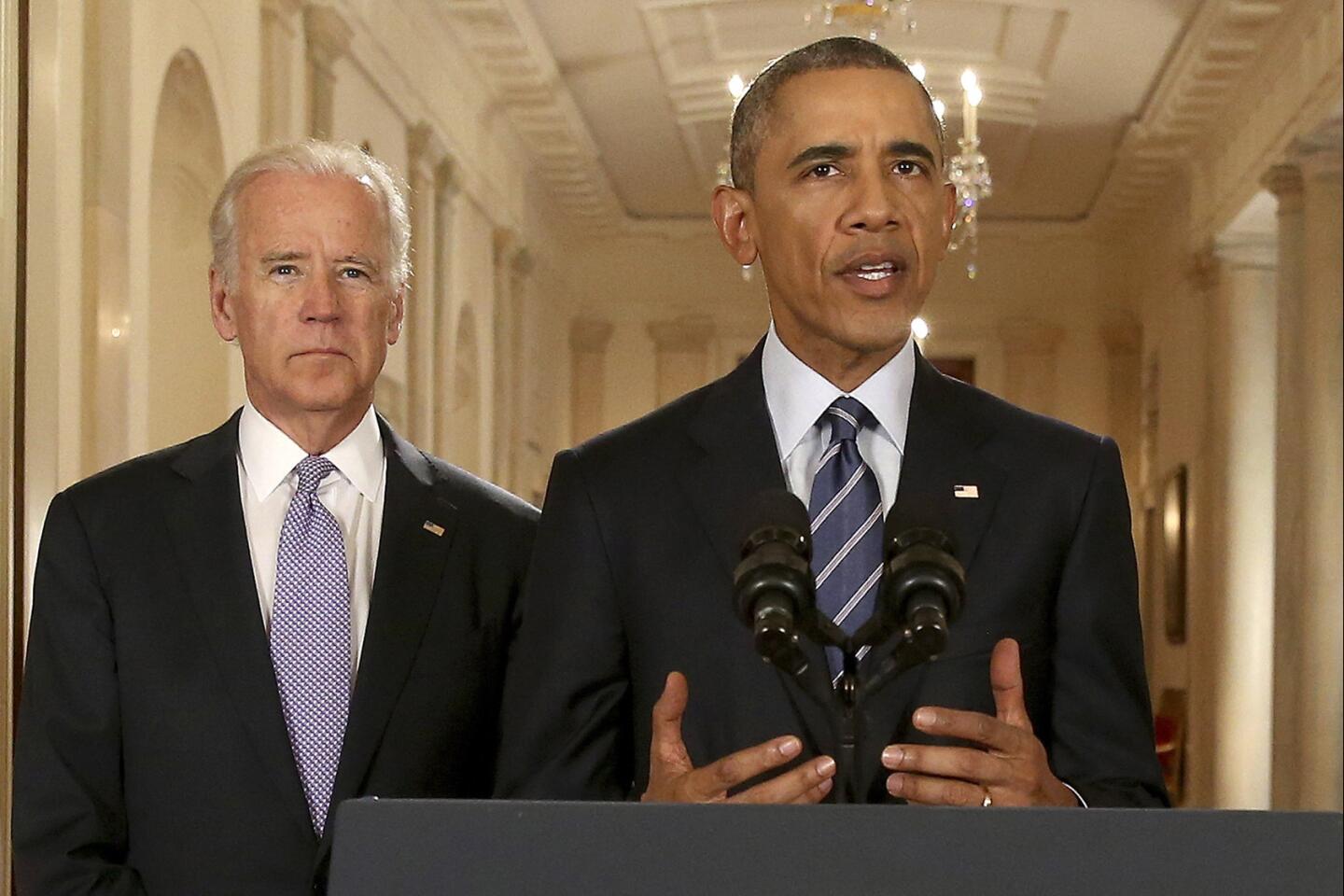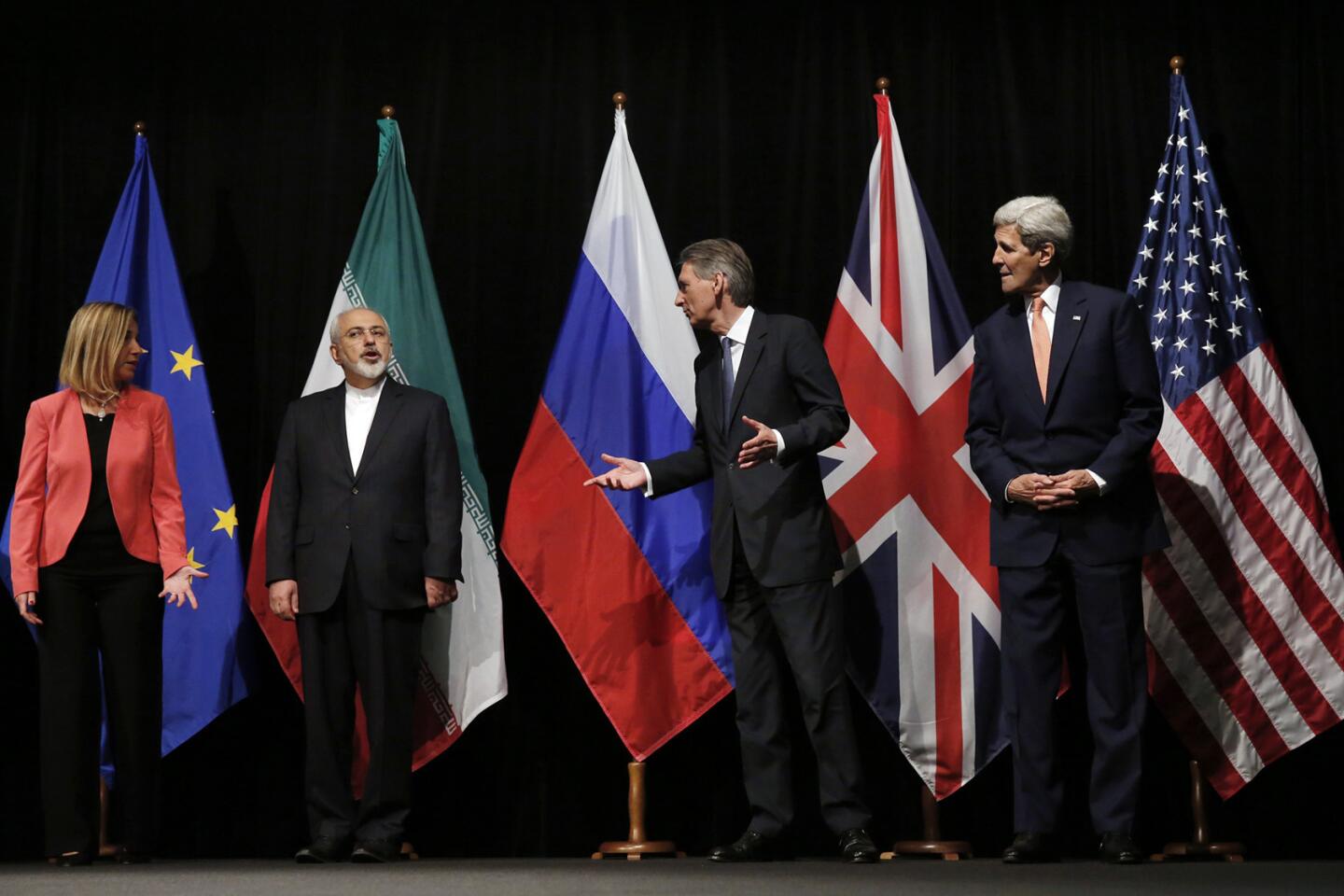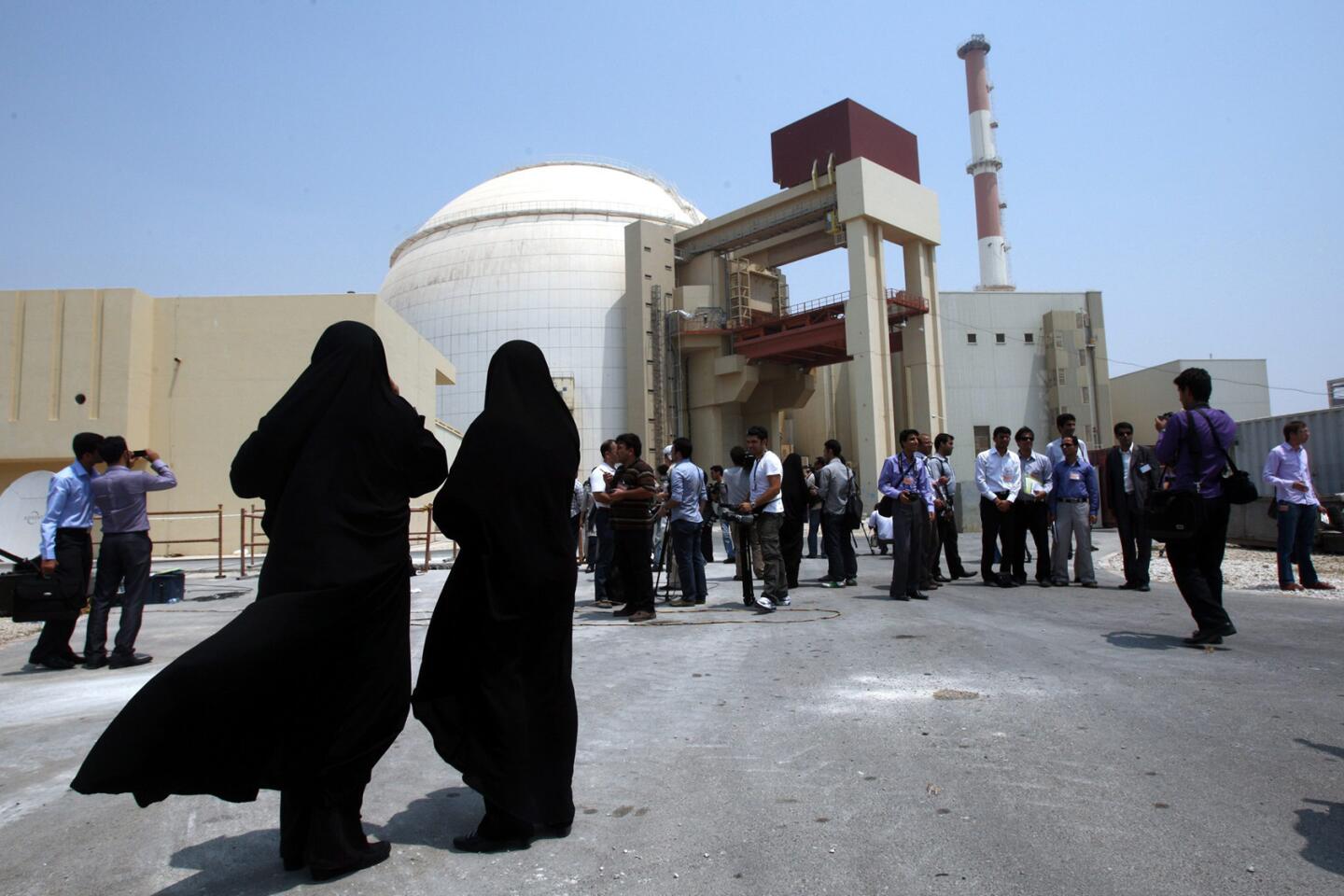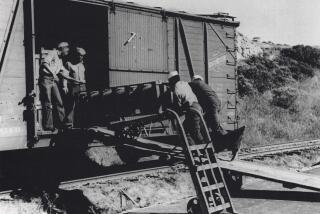How U.S. sailors almost started a crisis with Iran
- Share via
reporting from WASHINGTON — It was nearly nightfall Tuesday and the two camouflaged U.S. Navy speedboats were off course in the Persian Gulf, possibly taking a shortcut through Iranian waters and apparently running out of gas on their more than 300-mile journey back to base.
When Iranian naval vessels approached, the 10 U.S. sailors aboard the two 50-foot-long riverine boats tried to make a run for it. But one boat developed engine trouble that slowed its escape, and the crew and both craft were quickly seized.
To complicate matters, U.S. officials said Thursday, the Navy crew inexplicably lost all radio and other communications with the 5th Fleet’s operations and command center during the tense encounter, leaving the Pentagon in the dark.
The Navy was able to track the missing boats as they were apparently towed to a military pier on Iran’s Farsi Island — where the elite Islamic Revolutionary Guard Corps happens to operate a base.
The result was the 16-hour detention of all 10 U.S. crew members by the Iranian military, an incident that provoked international headlines and several rounds of high-level diplomacy before the quiet release of the sailors and their vessels on Wednesday. But while the Pentagon initially appeared to portray the encounter as a case of a simple mechanical malfunction, new details emerged Thursday that suggest otherwise.
The way those sailors were treated was entirely inappropriate. ... The U.S. Navy would never demand Iranian sailors hold their hands on their heads and coerce a confession.
— James Stavridis, retired U.S. admiral
The mechanical problems, according to a more complete account from U.S. officials, were only part of a litany of troubles that befell the U.S. Navy that evening in the middle of one of the most volatile waterways in the world.
The situation became only more complicated when a U.S. aircraft carrier task force led by the Harry S. Truman, on patrol in the gulf, quickly launched search helicopters into Iranian airspace. That served to further alarm Tehran, even as U.S. officials began considering a possible rescue operation.
That sparked a frantic series of phone calls between top State Department and Pentagon officials, backed by the White House, and their Iranian counterparts as both sides sought to prevent an apparent accident from escalating into a hostage standoff and a potential armed confrontation.
The eventual release of the Americans — they had been fed and given blankets and were allowed to sail back to a waiting U.S. cruiser with all their equipment — defused the budding crisis. Relieved U.S. officials said the high-level contacts were a side benefit of the intense negotiations that produced the landmark nuclear deal with Tehran last summer.
The Pentagon is investigating whether the crew members were mistreated during their brief detention, why the two boats lost communications, and why they entered waters strictly off limits to U.S. vessels. Iranian media said the boats were more than a mile inside Iran’s internationally recognized 12-mile limit.
“It clearly was a mistake,” Defense Secretary Ashton Carter said Thursday in an interview with the cable network Fusion. “That much seems clear by now. It was a navigational mistake.”
The incident has embarrassed the Pentagon and put the White House on the defensive as President Obama delivered his State of the Union speech and as the first major step of the nuclear deal — the dismantlement of Iran’s nuclear infrastructure and the easing of United Nations sanctions — may be just days away.
It also raises questions of whether Iran violated international law by using the detainees for propaganda purposes.
After the release, a video on Iranian television purported to show several Americans kneeling, with their hands clasped behind their heads. Another video showed the U.S. commander of the two boats, later identified as Lt. David Nartker, as he apologized profusely and blamed a navigational error. He did not explain how that occurred.
State Department spokesman John Kirby said Thursday that the video did not violate the Geneva Convention on treatment of prisoners of war, because the U.S. is not at war with Iran. But he made clear his unease.
“The video on the face of it is — it’s difficult to watch, and there’s no question about that,” he told reporters. “And nobody likes to see our sailors in that position. I can’t speak for the motivations for why they did it, why they put it out there, if they did it for propaganda purposes, I would — we would certainly join in those that are expressing concerns about that. I mean, that’s — you know, that’s less than helpful.”
Sen. John McCain (R-Ariz.), chairman of the Senate Armed Services Committee, said the Obama administration wasn’t willing to hold Iran accountable because it is too invested in the nuclear deal.
“The administration is pretending as if nothing out of the ordinary has occurred,” he said in a statement. It “places our Navy and Coast Guard vessels and the men and women who sail them at increased risk in the future.”
James Stavridis, a retired U.S. admiral and former NATO supreme commander, said Iran had “humiliated” the Americans on camera.
“The way those sailors were treated was entirely inappropriate in my view,” he said in a telephone interview. “The U.S. Navy would never demand Iranian sailors hold their hands on their heads and coerce a confession of guilt or apology to be broadcast. The Iranians’ behavior in this situation was completely uncalled for.”
The 5th Fleet said that the sailors were unharmed and that they are being debriefed at a U.S. base in Qatar. It may take several days to complete the debriefings and determine what happened, officials said.
Pentagon officials believe the boats, from the Navy’s Coastal Riverine Group 1 based in San Diego, were low on gas and heading for a rendezvous with a refueling ship three miles outside the Iranian 12-mile limit.
A sailor may have punched the wrong coordinates into the GPS and they wound up off course. Or the crew members may have taken a shortcut into Iranian waters as they headed for the refueling ship, officials said.
A senior State Department official, who briefed reporters on condition of anonymity, said Washington first got word of the incident about noon Tuesday. It was 8 p.m. in the Persian Gulf.
Secretary of State John F. Kerry and Carter were meeting their Philippine counterparts in one of the ornate diplomatic rooms on the eighth floor of the State Department. Both U.S. officials excused themselves and raced out to investigate.
Kerry already had a phone call scheduled for 12:45 p.m. with Iranian Foreign Minister Mohammad Javad Zarif to talk about the nuclear deal. Kerry reached out first to Gen. Joseph Dunford, chairman of the Joint Chiefs, and Susan Rice, Obama’s national security advisor.
When he spoke to Zarif at 1 p.m., the State Department official said, Kerry told him that the two boats were transiting between Kuwait and their base in Bahrain, home port of the 5th Fleet, when the Navy “lost communication with them.” They were now docked at Farsi Island.
Kerry made clear, the official said, that the most important priority was that the sailors be released “safely and unharmed and as quickly as possible.”
“If we are able to do this in the right way, we can make this into what will be a good story for both of us,” Kerry told Zarif, according to the official.
The Pentagon also was reaching out on a separate channel of communications between 5th Fleet and Iranian authorities.
“We’re thinking, ‘Oh my gosh, we lost comms. Are they in distress?’” a Pentagon official said. “So we’re going to do all we can to find them, starting at the last point at which you track them.”
See more of our top stories on Facebook >>
After the diplomats got involved, the Navy called back its helicopters to avoid complicating the effort to release the sailors, another official said.
Operating from his seventh-floor office, Kerry spoke to Zarif again at 2 p.m. The Iranian diplomat assured him he was trying to gather information and “that he agreed with the imperative of getting this resolved as soon as possible,” the State Department official said.
In another call, about 3:15 p.m., Zarif told Kerry that he had been informed that the sailors “would be free to go at dawn” because it was not safe for them to leave in the middle of the night.
In the end, the sailors were released much later — about 11:45 a.m. local time. They quickly sailed back into international waters — one boat still with a bum engine — and were picked up by the Navy.
ALSO
Oscars 2016: Here’s why the nominees are so white -- again
Chino Hills 7-Eleven still waiting for its Powerball winner to come forward
Tension between ranchers and federal officials is dangerously high in Nevada
More to Read
Sign up for Essential California
The most important California stories and recommendations in your inbox every morning.
You may occasionally receive promotional content from the Los Angeles Times.
